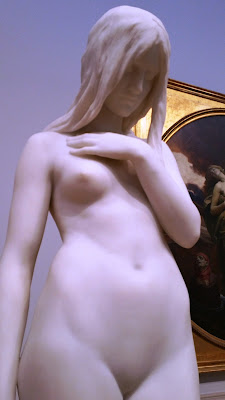 1) consecuencias de interpretar al ser como mera existenciadecae en su valor metafísico. Esse (ser) es un acto intensivo, y por eso se habla de grados de ser. Existir indica por el contrario el aspecto más superficial. El hecho de q existan no distingue a las cosas entre sí. Mientras no hay grados de existencia, si hay grados de ser y de perfección
1) consecuencias de interpretar al ser como mera existenciadecae en su valor metafísico. Esse (ser) es un acto intensivo, y por eso se habla de grados de ser. Existir indica por el contrario el aspecto más superficial. El hecho de q existan no distingue a las cosas entre sí. Mientras no hay grados de existencia, si hay grados de ser y de perfección
1.1.1. Cómo se posee la noción de ente
Se posee al principio de manera imperfecta,se va perfeccionando con la experiencia, al conocer muchos entes y diversas maneras de ser.
a) No es una noción genérica( de género: animal, hombre, etc)la noción de ente no es un género, por que no se le puede añadir ninguna diferencia que no se encuentre contenida ya en él. La noción de ente lo contiene todo máxima extensión, su contenido nocional o comprensión es máximo. Abarca todas las realidades del mundo con todas sus características singulares. No basta decir q algo es un ente sino que es preciso indicar de forma explícita su peculiar modo de ser (x ej q es un libro ,una pluma o un perro)
b) Error en la noción de ente como género Escoto y Suárez conocemos con la inteligencia los existentes singulares, luego se abstrae su naturaleza común, quedándonos con la esencia; y finalmente, llegaríamos a un género supremo máximamente abstracto y separado de la esencia, sería el ente. Esta es la concepción del racionalismo cuyo contenido es la idea generalísima de ser. De allí se deriva el prejuicio de q la metafísica se desentendería de la realidad y de la experiencia.
2.La estructura metafísica del ente finito
Esencia es aquello q la cosa es
Ente es aquello x lo cual la cosa es.
2.1Todo ente finito está compuesto de acto de ser y esencia
Existen perfecciones diversasla perfección comúnel ser.
Todas las criaturas están compuestas de un acto (el ser) encierra de modo eminente todas sus perfecciones y de una potencia (la esencia) lo limita a un grado determinado.
1) consequences of interpreting the being like mere existenciafall in its metaphysical value. One is (a being) it is an intensive act, and that's why one speaks about grades of being. To exist indicates on the contrary the most superficial aspect. The fact of q exist it does not distinguish to the things between themselves. While there are no existence grades, if there are grades of being and of perfection
1.1.1. How is the entity notion possessed
It is possessed at the beginning of imperfect way, se he is perfecting with the experience, on having known many entities and diverse ways of being.
a) It is not a generic notion (of genre: animal, man, etc) entity notion is not a genre, why it is not possible to add to him any difference that should not be already contained in him. The entity notion contains all his maximum extension, its notional content or comprehension is maximum. It includes all the realities of the world with all its singular characteristics.
He is not enough to say that q anything is an entity but it is necessary to indicate of explicit form its peculiar way of life (x ej q is a book, a pen or a dog)
b) Error in the entity notion since género I Pay share and Suárez we knows with the intelligence the existing singular ones, then abstracts its common nature, remaining with the extract; and finally, we would come to a supreme genre to the maximum abstract and separated from the extract, it would be the entity. This is the conception of the rationalism which content is the most general idea of being.
From there the metaphysics derive the prejudice of q he would feign ignorance of the reality and of the experience.
2. The metaphysical structure of the finite entity
Extract is that one q the thing is
Entity is that one x which the thing is.
2.1Todo finite entity is composed of act of being and extract
Perfection exists diversasla perfection comúnel to be.
All the creatures are composed of an act (the being) close of an eminent way all its perfection and of a potency (the extract) it limits it to a certain grade.























































